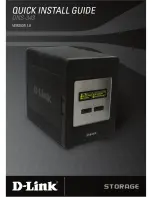
286
GS716T and GS724T Gigabit Smart Switches
The DiffServ feature contains a number of conceptual QoS building blocks you can use to
construct a differentiated service network. Use these same blocks in different ways to build
other types of QoS architectures.
There are 3 key QoS building blocks needed to configure DiffServ:
•
Class
•
Policy
•
Service (i.e., the assignment of a policy to a directional interface)
Class
You can classify incoming packets at layers 2, 3, and 4 by inspecting the following information
for a packet:
•
Source/destination MAC address
•
EtherType
•
Class of Service (802.1p priority) value (first/only VLAN tag)
•
VLAN ID range (first/only VLAN tag)
•
IP Service Type octet (also known as: ToS bits, Precedence value, DSCP value)
•
Layer 4 protocol (TCP, UDP etc.)
•
Layer 4 source/destination ports
•
Source/destination IP address
From a DiffServ point of view, there are two types of classes:
•
DiffServ traffic classes
•
DiffServ service levels/forwarding classes
DiffServ Traffic Classes
With DiffServ, you define which traffic classes to track on an ingress interface. You can define
simple BA classifiers (DSCP) and a wide variety of multifield (MF) classifiers:
•
Layer 2; Layers 3, 4 (IP only)
•
Protocol-based
•
Address-based
You can combine these classifiers with logical AND or OR operations to build complex
MF-classifiers (by specifying a class type of
all
or
any
, respectively). That is, within a single
class, multiple match criteria are grouped together as an AND expression or a sequential OR
expression, depending on the defined class type. Only classes of the same type can be
nested; class nesting does not allow for the negation (i.e.,
exclude
option) of the referenced
class.















































